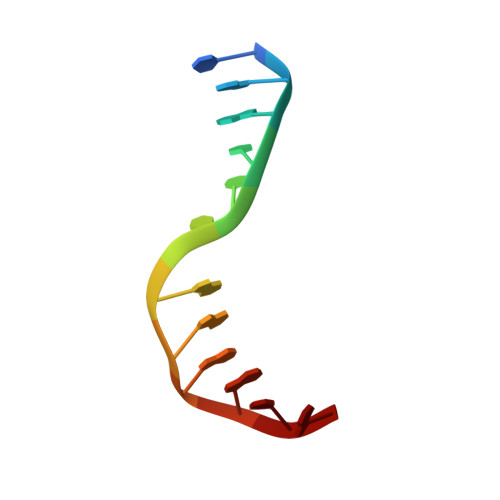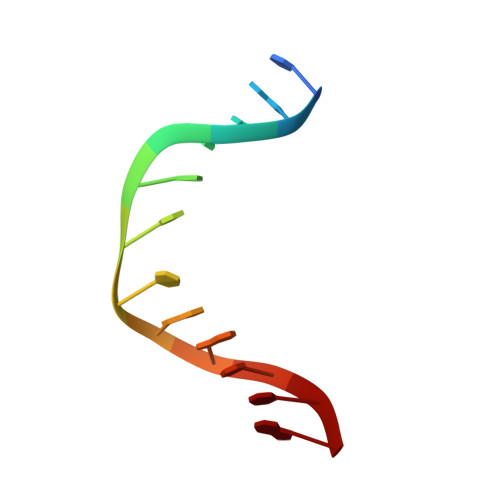NMR evidence for syn-anti interconversion of a trans opened (10R)-dA adduct of benzo[a]pyrene (7S,8R)-diol (9R,10S)-epoxide in a DNA duplex.
Volk, D.E., Rice, J.S., Luxon, B.A., Yeh, H.J., Liang, C., Xie, G., Sayer, J.M., Jerina, D.M., Gorenstein, D.G.(2000) Biochemistry 39: 14040-14053
- PubMed: 11087351
- DOI: https://doi.org/10.1021/bi001669l
- Primary Citation of Related Structures:
1FYY - PubMed Abstract:
2D NMR has been used to examine the structure and dynamics of a 12-mer DNA duplex, d(T(1)A(2)G(3)T(4)C(5)A(6)A(7)G(8)G(9)G(10)C(11)A(12))-d(T(13)G(14)C( 15)C(16)C(17)T(18)T(19)G(20)A(21)C(22)T(23)A(24)), containing a 10R adduct at dA(7) that corresponds to trans addition of the N(6)-amino group of dA(7) to (-)-(7S,8R,9R,10S)-7,8-dihydroxy-9, 10-epoxy-7,8,9,10-tetrahydrobenzo[a]pyrene [(-)-(S,R,R,S)-BP DE-2]. This DNA duplex contains the base sequence for the major dA mutational hot spot in the HPRT gene when Chinese hamster V79 cells are given low doses of the highly carcinogenic (+)-(R,S,S,R)-BP DE-2 enantiomer. NOE data indicate that the hydrocarbon is intercalated on the 5'-side of the modified base as has been seen previously for other oligonucleotides containing BP DE-2 (10R)-dA adducts. 2D chemical exchange-only experiments indicate dynamic behavior near the intercalation site especially at the 10R adducted dA, such that this base interconverts between the normal anti conformation and a less populated syn conformation. Ab initio molecular orbital chemical shift calculations of nucleotide and dinucleotide fragments in the syn and anti conformations support these conclusions. Although this DNA duplex containing a 10R dA adduct exhibits conformational flexibility as described, it is nevertheless more conformationally stable than the corresponding 10S adducted duplex corresponding to trans opening of the carcinogenic isomer (+)-(R,S,S, R)-BP DE-2, which was too dynamic to permit NMR structure determination. UV and imino proton NMR spectral observations indicated pronounced differences between these two diastereomeric 12-mer duplexes, consistent with conformational disorder at the adduct site and/or an equilibrium with a nonintercalated orientation of the hydrocarbon in the duplex containing the 10S adduct. The existence of conformational flexibility around adducts may be related to the occurrence of multiple mutagenic outcomes resulting from a single DE adduct.
Organizational Affiliation:
Sealy Center for Structural Biology and Department of Human Biological Chemistry and Genetics, University of Texas Medical Branch, Galveston, Texas 77555-1157, USA. david@nmr.utmb.edu
















